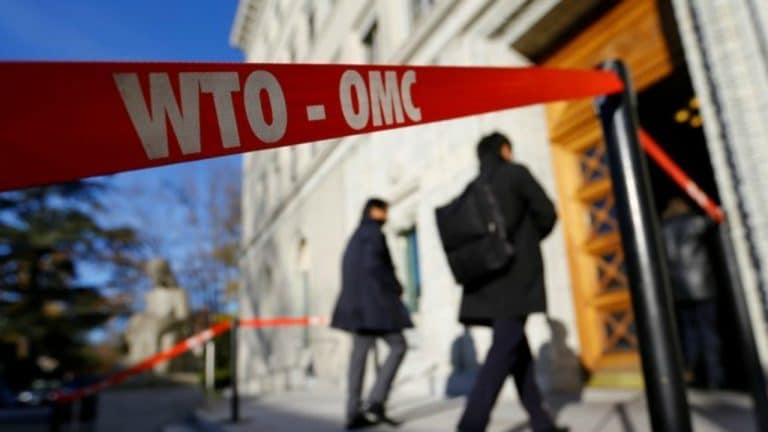
As the shadow of COVID-19 on the global economy and trade lengthens, international organisations are trying to prioritise their actions in the face of adversity. However, given the international rules-based system governing world trade, there are some matters which are time-critical due to their legal position, necessitating decisions in the near term. One such matter is a pending decision on ‘electronic transmissions’ by the WTO Ministerial Conference, the highest decision-making body of the global trade body. The decision is about making a choice between renewal or expiry of a moratorium on customs duty on electronic transmissions.
It is both ironical and topical that the matter on cross-border traffic in electronic transmissions should come up for a decision in times of social distancing when the whole world is relying upon digital technologies to work from home, access information and interact socially. If the Ministerial Conference, of WTO does meet in Kazakhstan in June 2020 as planned, the positions taken on the moratorium will indeed bear the impressions of the COVID-19 experience.
What is the moratorium?
In essence, the moratorium is a decision of the WTO Ministerial Conference adopted initially for a period of two years in 1998 and renewed periodically for further periods of two years. The decision, in brief was that the member countries of WTO would not levy customs duties on ‘electronic transmissions’ for a limited period. The last renewal of the decision in December 2019 extended the life of the decision only until June 2020, which is only for a period of six months. Before the representatives of member countries meet in Kazakhstan in June’20 to decide the fate of the moratorium, governments, industry and trade policy researchers have been actively debating the matter to create their own perspectives and influence others.
Goods, services and the moratorium:
The wording of the moratorium and its reference to customs duties concedes the point that some electronic transmissions could be treated as goods and customs duties could, in theory, be imposed on them. There would, of course, be many forms of electronic transmissions that could be better characterised as services.
As long as the moratorium is in force, there is no need of defining which electronic transmissions are goods and which are services. However, if the moratorium is not renewed, WTO and national governments will have to create definitions for categorising electronic transmissions as either goods or services so that duties can be imposed on goods. As commonly understood, services are economic activities in essence and can be distinguished from goods, which are a product of economic activities. National laws on taxation in countries do not serve as clear guides in this respect and definition clarity would need to be built into customs laws for the purpose.
Tariff revenue and protection:
Various estimates have been made of the size of digital trade, loss of potential tariff revenue and protection to the domestic industry, on account of not subjecting digital goods to customs duties. A study by UNCTAD in February 2019 estimated the revenue loss on account of not applying bound rates of tariff to electronic transmissions at more than $8 billion for 58 developing countries. As more and more goods become digitised, and new technologies like 3-D printing become mainstream to manufacturing, the estimated loss of tariff revenue will increase.
Monitoring of transactions and collection of duties:
Some participants in the debate on the subject have questioned the technical feasibility of imposing customs duties on electronic transmissions. However, indirect taxes like GST and VAT have been charged for some time on non-physical imports of digital products into India, EU, Australia, New Zealand and a few other jurisdictions. India imposes an equalisation levy on certain digital transactions and France has recently introduced a digital services tax as a direct tax. Bangladesh had already begun to collect customs duties on the electronic downloads of software some three years back. Developing countries often track online transactions through controls on large outward remittance of foreign currencies. An outward remittance may only be allowed if duties and taxes have been paid on the transaction. Hence feasibility of collecting and monitoring duties on non-physical goods would not be an impediment in imposition of customs duties.
The way forward:
The decision at the Ministerial Conference in June 2020 will depend on techno-legal aspects of the matter as well as economic and political trade-offs between WTO members. The COVID-19 impact in terms of people accessing work and software remotely and increased use of technologies like 3-d printing could lead to sudden growth in digital transactions in ‘goods’ as well as ‘services’. Whatever be the decision on the moratorium in this context, there is homework to be done by the governments and the industry. This would involve looking at potential customs classification issues, customs valuation issues and modifications to Free Trade Agreements from the perspective of electronic transmissions. Such preparedness would stand the industry and governments in good stead once the present health and economic crisis is behind us.
source: cnbctv18
| M | T | W | T | F | S | S |
|---|---|---|---|---|---|---|
| 1 | 2 | 3 | 4 | 5 | 6 | |
| 7 | 8 | 9 | 10 | 11 | 12 | 13 |
| 14 | 15 | 16 | 17 | 18 | 19 | 20 |
| 21 | 22 | 23 | 24 | 25 | 26 | 27 |
| 28 | 29 | 30 | 31 | |||



























